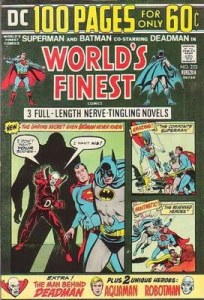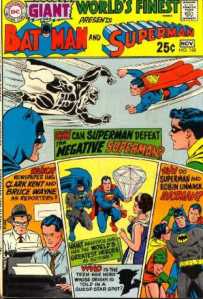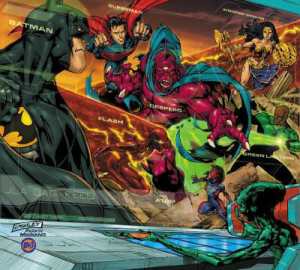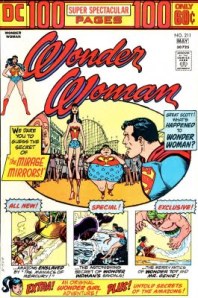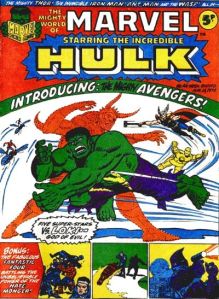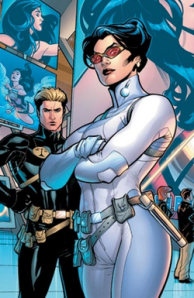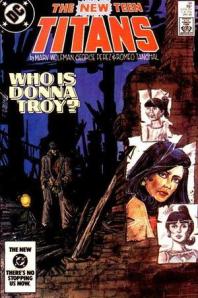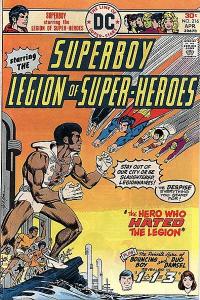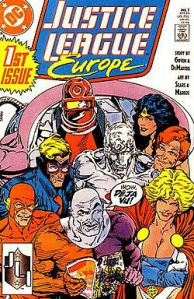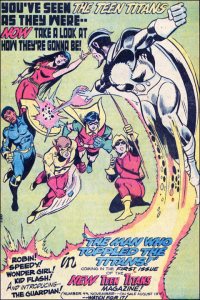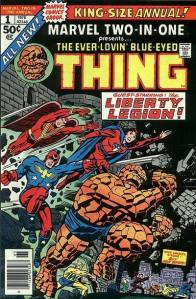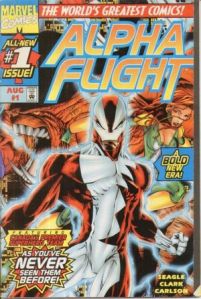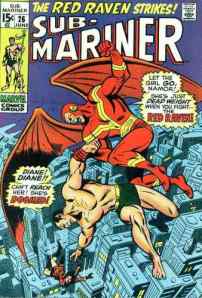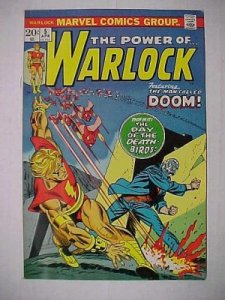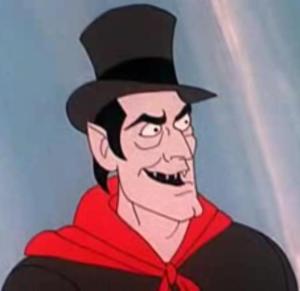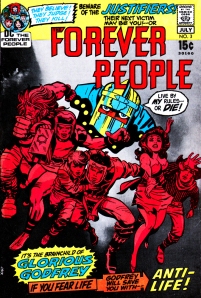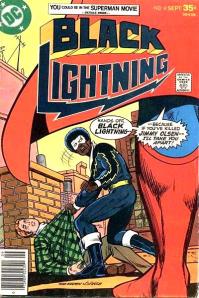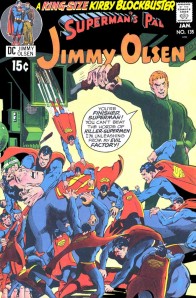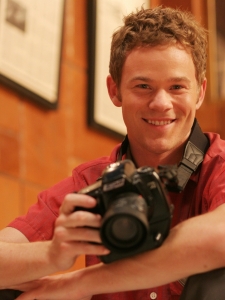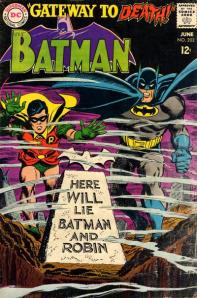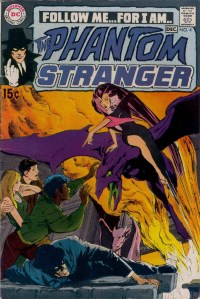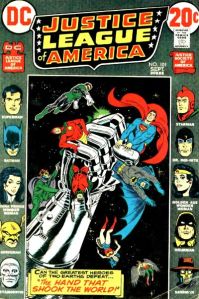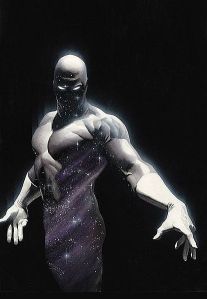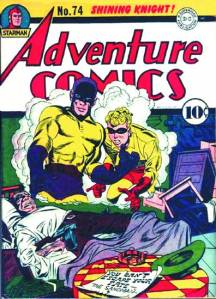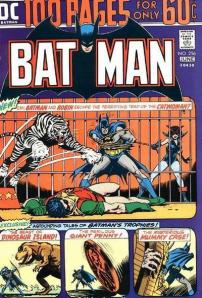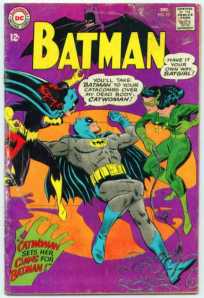Continuing an issue-by-issue review of the 100-page DC Super-Spectaculars of the early 70s, today we have yet another comic from that most bountiful month, June, 1974. I can’t remember anything behind the circumstances of this purchase; I just remember reading it one smirry Saturday afternoon, in my bedroom in Chapelton.
By the Bronze Age, I had read a handful of early-70s issues of WF. A couple of Giants in the late 60s ( and the gloriously wacky Planet of the Apes issue above) had taught me that this was the home of monthly team-ups of best buds Superman and Batman (and Robin). But the Masked Manhunter had been ousted during the DC Relevancy period and Superman had been teamed with Robin, Mod Wonder Woman, Dr. Fate, Vigilante and others. There were two cute if short-lived Golden Age reprint features,The Bureau of Missing Heroes/Villains, appearing as back-ups.
Editor Murray Boltimoff had returned to the status quo in of ’73 and Bob Haney’s Metamorpho ( one of my earliest DC memories) had been revived, popping up in both WF and Action. Haney was also responsible for The Sons of Superman and Batman, the completely out-of-continuity, previously- unheard-of, young adult offspring of the World’s Finest team. Despite Haney’s trademark hilarious hip dialogue, there’s actually some mileage in the idea: charting the journey to adulthood of two comic- book legends but in the Sensational Seventies, rather than the Golden Age.
The Super-Sons might have seemed “far-out” but Haney was about to unleash another hitherto-unknown Bat-tastic twist to the Wayne family tree.
Wipe the Blood off my Name: funky phantom Deadman guest-stars in a mystery where Bats and Supes track down a psychopathic killer. It’s only Bruce Wayne’s long-lost older brother Thomas, who was brain-damaged in infancy and committed to an asylum like a minor British royal! The story ends with Deadman occupying the elder Wayne’s body. There’s no explanation of what happened to the Follower- the construct Boston Brand animated when last seen in Forever People. It’s quite cute, however, that only Batman knows of Deadman’s involvement- Boston doesn’t register to Superman’s senses.
The story of Thomas Wayne was never referred to again, to my knowledge, until Grant Morrison introduced the satanic Dr. Hurt a few years ago. The Glaswegian mage retconned Thomas as Bruce Wayne’s uncle, rather than brother. However, I gave up Batman around the time of Batman RIP because I found it too violent and sadistic. Nonetheless, I love Haney’s oddball additions to the Bat-Family, including Wayne’s tragic stepson and haunted godson.
An Eye for an Eye: I had actually read this story- the second episode of the Deadman Saga- somewhere before; probably in a Double Double comic. A gritty, Marvel-esque story, Deadman’s encounter with his girlfriend’s loser brother and a Hell’s Angel gang made me realise how much Ghost Rider might owe to Boston Brand. Adams’ Spectre- much as I like him- was a more fanciful character, whose cosmic adventures were lighter in tone.
The Reversed Heroes: an exciting Dick Sprang adventure where B&R gain super-powers from some Kryptonian capsules to help a de-powered Supes corral a crook who looks like Space Ghost. I love some 50s Batman!
The Sunken City of Gold: a charming Lost World tale by Ramona Fradon. Aquaman is still a pretty dull character, however.
License for a Robot: an inconsequential short about municipal bureaucracy by Joe Certa, starring the Golden Age Robotman. I much prefer Deadman’s brother in spirit: the mordant, slightly unhinged Robotman-iac of Arnold Drake’s Doom Patrol.
The Superman and Batman Team on Radio: A text feature on the Superman radio serial, printing excerpts from a 1945 script. The plot involves Lois’ criminal lookalike and her kidnapping in an amusement park. Interestingly, Jimmy Olsen is described as 16 ( I always assumed he was about eighteen to twenty!) and Dick Grayson a year or two younger (14, then?) I’ve always been interested in radio drama and would love to hear this.
 Composite Superman vs. the 80s Legion
Composite Superman vs. the 80s Legion
The Composite Superman: A Curt Swan epic in which the eponymous villain gains super-powers from statuettes of the Legionnaires, basically becoming The Mimic of the LSH. An almost unstoppable foe, his borrowed powers wear off in the nick of time. This is quintessential World’s Finest to me.
From the World’s Finest Fans: The letters page debates whether WF should continue as a Superman team-up book. Some four years later, DC Comics Presents would fulfil that function. There are also a couple of requests for more Metamorpho and (this may surprise you) enthusiasm for the Super-Sons.
With this issue Dillin’s pencils convinced me Deadman would have made an appealing and visually dynamic addition to the Bronze Age JLA. As would Plastic Man ( yes, alongside Elongated Man!) , Batgirl Babs, Wildcat, The Original Captain Marvel and Mr. Miracle. Ah, DC Editorial!
Coming soon: Batman and Alex Toth.
All images presumed copyright of their respective owners
